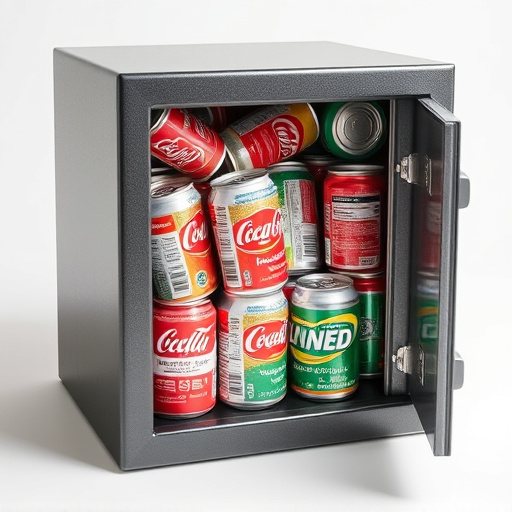Everyday cleaning products are increasingly being exploited as vehicles for hiding illicit items due to sophisticated secret compartments designed into their packaging (fake cleaning product secret compartments). While these advanced hiding spots offer discretion and security, they pose significant risks including fire hazards, distribution of counterfeit or hazardous substances, and facilitation of criminal activities. To protect against these practices, consumers should exercise vigilance when purchasing cleaning products, examining labels, seams, weight, prices, and reviews for inconsistencies. Reporting suspicious items can help combat fraudulent practices and underscore the need for greater transparency and regulation in manufacturing.
Discover the hidden world of concealed compartments within consumer products, particularly focusing on fake cleaning supplies. This article unravels the mysteries behind these secret stowaways, providing insights into how to identify and avoid them. From understanding the allure of hidden compartments for counterfeiters to exploring the potential dangers, we delve into the unsettling reality of fake cleaning product secret compartments. Learn what signs to look out for and stay informed about the implications of using such products.
- Understanding Fake Cleaning Product Secret Compartments
- How to Spot and Avoid Concealed Compartments in Consumer Products
- The Dangers and Implications of Using Products with Hidden Compartments
Understanding Fake Cleaning Product Secret Compartments
Hidden within everyday consumer products, like cleaning supplies, are often secret compartments designed to conceal illicit items or sensitive documents. These clever hiding spots, known as fake cleaning product secret compartments, have evolved with advancements in manufacturing and the increasing need for secure storage. From seemingly innocuous bottles of all-purpose cleaner to heavy-duty floor detergents, these products can mask a much deeper purpose.
Crafted with intricate designs, these compartments are seamlessly integrated into the packaging, making them nearly undetectable to the untrained eye. They serve as safe havens for contraband, personal documents, or valuable assets, offering a level of discretion and security that conventional storage methods cannot match. This innovative approach to stashing sensitive materials has both practical and intriguing applications in modern society.
How to Spot and Avoid Concealed Compartments in Consumer Products
Spotting concealed compartments in consumer products, especially within seemingly innocent cleaning items, is a growing concern for consumers and regulatory bodies alike. Scammers often hide fake compartments within everyday items, allowing them to smuggle illegal substances or counterfeit goods. One of the most common places for these secrets stashes is inside cleaning product containers. These compartments are cleverly designed to go unnoticed, blending seamlessly with the overall design of the product.
To avoid becoming a victim of such schemes, consumers should exercise heightened vigilance when purchasing cleaning products. Look beyond the packaging’s aesthetics and scrutinize the item for any unusual features or inconsistencies. For example, a slightly off-center label, irregular seams, or an unusually heavy container could indicate a hidden compartment. Additionally, be wary of exceptionally low prices; if something seems too good to be true, it probably is, especially when dealing with unknown brands. Regularly checking product reviews and reporting suspicious items can also help deter these fraudulent practices.
The Dangers and Implications of Using Products with Hidden Compartments
Using products with hidden compartments, especially fake cleaning supplies designed to look genuine, can pose significant risks. While these concealed spaces might seem like a clever way to store personal items or even contraband, they carry dangers that are often overlooked. One of the primary concerns is the potential for fire hazards; these compartments may house flammable materials or accelerants, increasing the risk of uncontrolled fires in homes or public spaces. Moreover, hidden compartments can facilitate the distribution and sale of counterfeit or hazardous substances, such as fake cleaning products containing toxic chemicals.
Implications extend to consumer safety and product regulation. The presence of secret compartments suggests a lack of transparency in product manufacturing and quality control. It raises questions about the authenticity of items on store shelves and the potential for manufacturers to evade safety standards. Additionally, these hidden spaces can facilitate criminal activities, making it easier for individuals to transport illegal substances or engage in fraud, which has broader societal consequences.
In light of the potential dangers posed by hidden compartments in consumer products, such as fake cleaning supplies, it’s crucial for buyers to be vigilant and informed. Understanding the tactics used to conceal these secret compartments is essential to protect oneself from acquiring potentially harmful or illegal items. By learning how to spot and avoid these concealed compartments, consumers can ensure they are making safe and ethical purchasing decisions. Stay vigilant, question unusual product features, and always prioritize transparency in the market to safeguard against the risks associated with fake cleaning products and their secret compartments.
